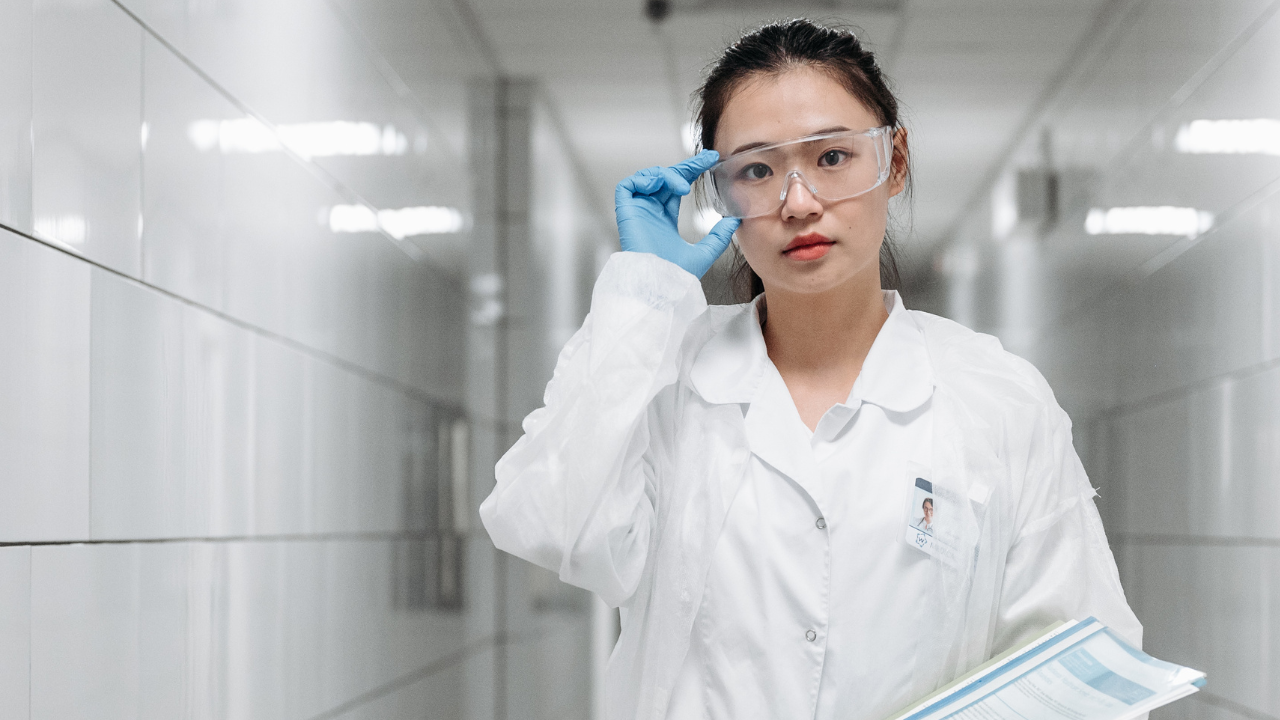What are the most expensive drugs in the United States in 2023?
26 Sept, 202312:45The United States has some of the world's highest prices for prescription drugs. 'Breakthrou...

The United States has some of the world's highest prices for prescription drugs. 'Breakthrough therapies', medications used to treat life-threatening conditions, typically top the list of the most expensive treatments, with many on the list running into millions of dollars for a single dose. In addition, the shorter the prescription dose or fewer doses, the higher the typical price per dose will be.
How prices are determined
Pricing strategies for treatments marketed by the companies producing them are not transparent because of:;
- The rarity of the condition the drug is meant to treat. Gene therapy, for example, is considered the most costly treatment as the conditions are typically rare and complex, requiring specialist development for a small population of patients. Research, testing, and evaluation can be more difficult if a condition is particularly rare.
- The general costs of researching and producing therapies and treatments. The research, testing, monitoring, production, storage and delivery of treatments involve many people and advanced equipment, which means the investment required upfront is significant.
- Generic or biosimilar availability – drugs with similar properties to other treatments will be cheaper, so where there are fewer options for treatment, medications will be more expensive.
- Whether the treatment is included in insurance cover packages, in some cases, insurers may be reluctant to cover specific conditions due to the costs of the treatments.
- Prescription deductibles, copays, and discounts or rebates are available from the treatment manufacturer.
- Patients may be eligible for other financial assistance, such as Medicaid, Medicare, or other discounts.
Other reasons, as mentioned, are typically decided between the pharmaceutical companies and pharmacy benefit managers. While they are responsible for approving new treatments and drugs, the FDA has no control over the market pricing of medications. While the Inflation Reduction Act (IRA) of 2022 includes measures to tackle the cost of drugs in the United States, ultimately, the decision on pricing in the economy returns to the manufacturers.
The most expensive drugs in the United States as of 2023
- Hemgenix $3.5 million
- Skysona $3 million
- Zynteglo $2.8 million
- Zolgensma $2.1 million
- Myalept $1.6 million
- Zokinvy $1.0 million
- Danyelza $1.0 million
- Kimmtrak $975,520
- Luxturna $850,000
- Folotyn $842,585
Hemegenix
Produced by CSL Behring and uniQure, Hemegenix is used for treating Hemophilia B in patients under Factor IX prophylaxis. Typically, patients with this blood condition would require regular infusions of factor IX, which is a factor that influences blood clotting. This treatment is needed for life and is extremely expensive over a patient's lifetime.
Hemegenix is a therapy that only needs to be administered once and allows a patient's body to produce its factor IX, significantly reducing the effects of the condition on the patient.
The cost, however, is significant – at $3.5 million for a single dose, it is by far the most expensive drug in the United States. The manufacturers justified this cost during FDA approval, stating that despite this price, it is still significantly cheaper than a lifetime of prophylactic therapy and reduces the economic burden of haemophilia B.
Skysona
Skysona is a therapy developed by Bluebird Bio to treat Cerebral adrenoleukodystrophy (CALD). Before Hemegenix, Skysona was the most expensive treatment in the United States, costing $3 million per dose. The FDA conditionally approves it based on further evidence of its efficacy.
The therapy is used to slow the impact of CALD in children, a neurological disease which appears early, mostly in boys, leading to disabilities and is fatal within a few years of diagnosis. There are few effective treatments for the disease, but a study into Skysona showed a 72% survival rate in patients.
Bluebird justifies the price of Skyona based on its effectiveness as a treatment of a highly complex, fatal condition; the health system cost savings and the potential societal impact on patients.
Zynteglo
Another treatment from Bluebird Bio, Zynteglo, was developed to treat beta thalassemia patients requiring regular red blood cell transfusions, as the condition causes a lack of oxygen in the blood. Typically, patients require transfusions every two to five weeks as a result.
When Zynteglo was developed, Bluebird initially set the price of a single treatment at 1.5m euros, or $1.8 million. However, after poor sales, the company withdrew from the European market, instead focusing on the United States, at the same time raising the treatment cost to $2.8m per dose – the highest price of any treatment in the country, until they gained FDA approval four weeks later for Skysona.
Bluebird has committed to refinding 80% of the cost of the treatment if a patient cannot achieve independence from transfusions after the gene therapy and argues that the cost of the treatment has significant cost savings over the lifetime of patients.
Zolgensma
Zolgensma is a one-time gene therapy treatment developed to provide lifetime support to patients with spinal muscular atrophy (SMA). This rare genetic condition affects around 500 young children in the US annually, resulting in muscle weakness and difficulty in crawling, walking and controlling head movements.
Developed by Novartis, the gene therapy was priced at $2.1 million per dose when it was approved by the FDA in 2019. Like many other costly gene therapy treatments, the company looks to reduce the burden of this cost by allowing payment over five years, bringing the cost in line with Spinraza, the first drug approved for use in treating SMA. They also argue that the transformative benefit of the single treatment and long-term value justifies the price. In recent trials, all ten patients who enrolled in a 15-year observational study of the effects of Zolgensma have maintained their treatment milestones.
Myalept
Myalept is a drug used to treat leptin deficiency and is the most expensive pharmacy-dispensed drug in the US. An average patient uses 18 vials a month for around $105,000 per month, or $1.26 million per year, as the treatment must be administered once daily. The amount of therapy can increase or decrease depending on the patient's reaction to the course.
The drug won FDA approval in 2014 to treat leptin deficiency, commonly seen in patients with congenital or acquired generalised lipodystrophy, which causes metabolic conditions due to loss of fat tissue under the skin.
The patent for the drug has moved between various companies through various buyouts of the companies producing it, increasing in price over the years. It was developed initially by Amylin Pharmaceuticals before the company was purchased by Bristol Myers Squibb, moving through AstraZeneca, Aegerion Pharmaceuticals, Amryt Pharma and currently Chiesi Farmaceutici through various acquisitions. Its high price is mainly due to Myalept being the only approved treatment for leptin deficiency.
Zokinvy
The first drug on the list that is not a gene therapy, Zokinvy, was developed by Eiger BioPharmaceuticals and was the first drug approved for treating Hutchinson-Gilford progeria syndrome in 2020. Also known as progeria, it is a rare, progressive genetic disorder characterised by premature ageing, which is typically fatal when children reach 15-20 years old.
While the drug is not a cure for the condition, it targets the buildup of progerin in patients, improving the disease's symptoms and quality of life.
The dosage can vary depending on the patient's size but can cost upwards of $1 million annually.
Danyelza
Another drug developed for treating relapsed or refractory high-risk neuroblastoma in the bone or bone marrow. This is typically children who have previously received treatment. It is the only drug currently produced by Y-mAbs Therapeutics.
The drug costs around $1m per year per patient and is endorsed by the FDA for patients who are either stable or have seen a partial response to previous treatments.
The FDA had put the treatment on its accelerated approval program, where it was trialled in two open-label trials, where FDA results showed 40% and 34% response rates. It won approval in 2020 and seeks further support in China in 2023.
Kimmtrak
Immunocore's Kimmtrak is the first therapy treatment for a rare type of eye cancer called uveal melanoma. While radiotherapy is used in the first instance to treat the cancer, around half of patients develop metastasis.
The treatment is delivered by infusion every week, with each vial costing $18,760 per vial or $975,520 annually. In practice, the treatment typically lasts around nine months.
To be eligible for treatment, a patient's tumour must test positive for a cell surface marker HLA-A*02:01, but Kimmtrack is also available without cost through Immunocore's Kimmtrak Connect program.
Luxturna
Developed by Spark Therapeutics, Luxturna is a gene therapy treatment for Biallelic RPE65-mediated inherited retinal disease, a rare genetic disease which causes loss of vision. It costs $850,000 for the one-off treatment, and when it was approved in 2017, it was the most expensive gene therapy drug.
Despite Spark Therapeutics's arguments of the treatment's value, the Institute for Clinical and Economic Review found that Luxturna would need to be more than 50% cheaper to be cost-effective for the medical industry.
In response to industry criticism of the launch, Spark Therapeutics introduced outcome-based deals, which would reduce the cost of the treatments if they were unsuccessful. The company has since looked at other options, including payment plans to manage the cost to the industry.
Folotyn
The cheapest treatment on our list is Folotyn, currently held by Acrotech Biopharma and approved by the FDA in 2009. Folotyn was approved to treat relapsed or refractory peripheral T-cell lymphoma, a form of cancer.
As of 2022, the drug costs $840,000 a year despite its age. Typical treatment involves approximately 135 vials of the drug a year, costing more than $6200 per vial. Due to the overall costs, it has remained in the top 10 most expensive drugs in the United States in 2023.
The drug was initially developed and marketed by Allos Therapeutics before being sold to Spectrum Pharmaceuticals in 2012 and again from Spectrum to Acrotech Biopharma in 2019 and has seen routine price rises over the past 14 years since approval. As with many other treatments on this list, the costs are often justified due to the rarity of the diseases they treat and the complexity and research investment of the treatments.
What does the future hold for the economics of pharmaceuticals?
As research into genetic and rare conditions continues, more companies stand to find new treatments and therapies, which increases competition and lowers prices. As generic drugs are developed to compete with named brands, the cost of treatment for patients is reduced. Additionally, through Medicare, Medicaid, and the IRA, the US government is looking at ways to reduce further the cost burden on patients who often choose between life-saving healthcare and necessities. Drugs developed outside the US are also feasible alternatives, with companies in Europe, China and India in the race to research breakthroughs in gene therapy.
Find Your Next Role in the Pharmaceutical Industry
Developing a new medication can cost billions and take more than a decade to perfect, and every innovation strategy needs highly skilled and motivated people to implement it. This challenge applies to most industries but is even more prevalent in the pharmaceutical industry.
NES Fircroft's expert recruitment teams recruit skilled engineering and technical professionals for global roles with some of the biggest names in the pharmaceutical industry.
If you're looking to take the following steps in your life sciences career, you can view all our open vacancies or register your CV with us today for free to ensure you're first in line for future jobs in this expanding industry.












